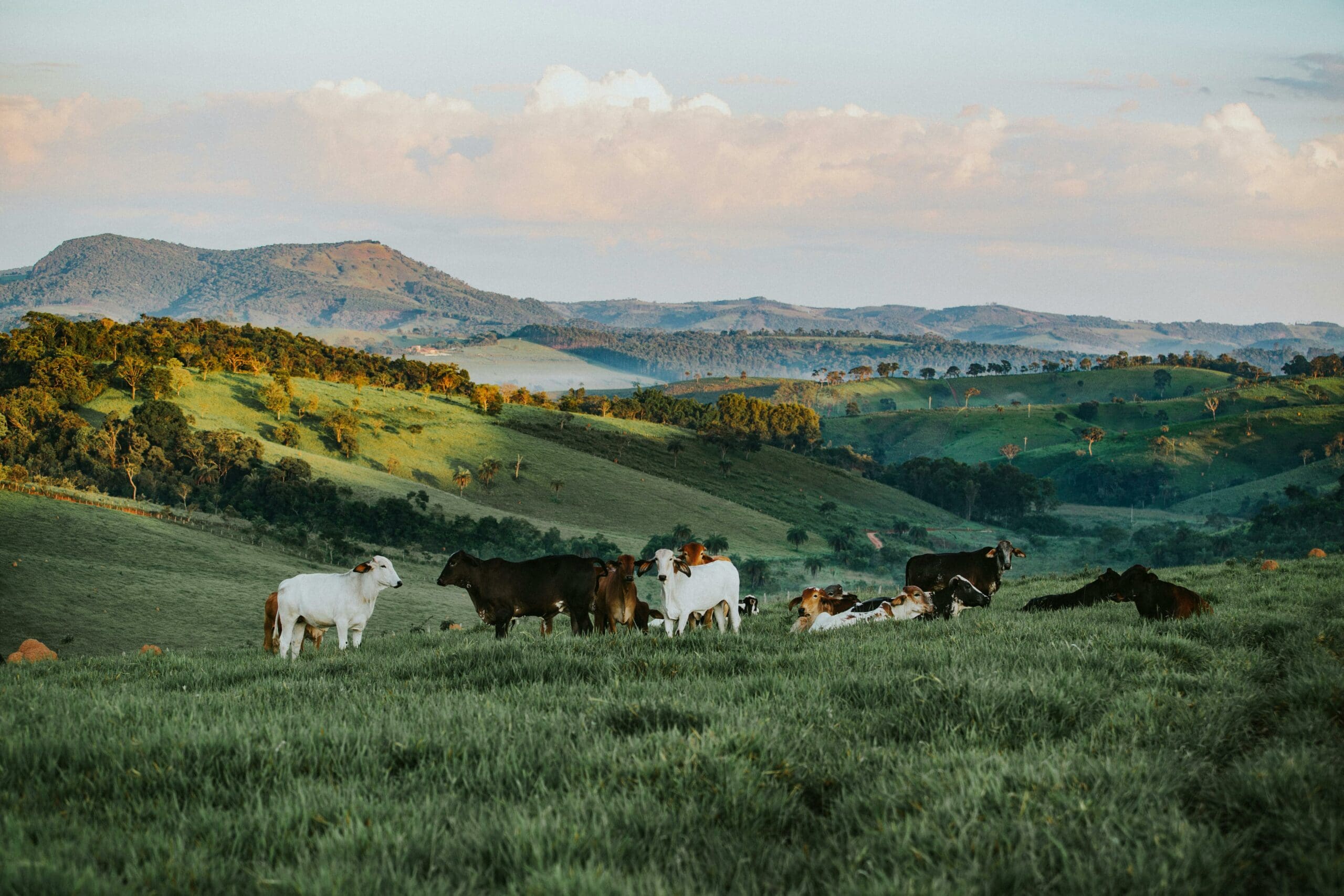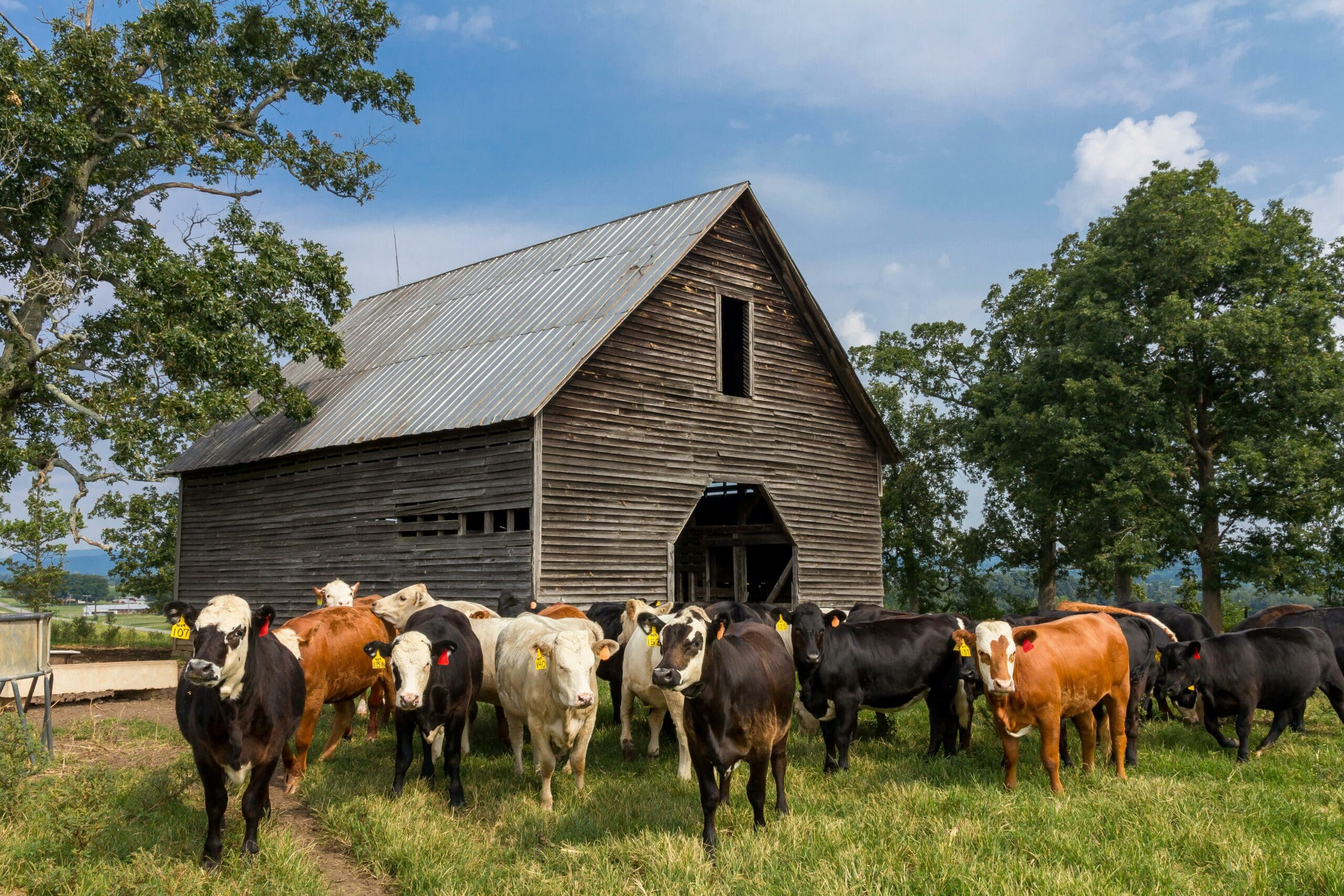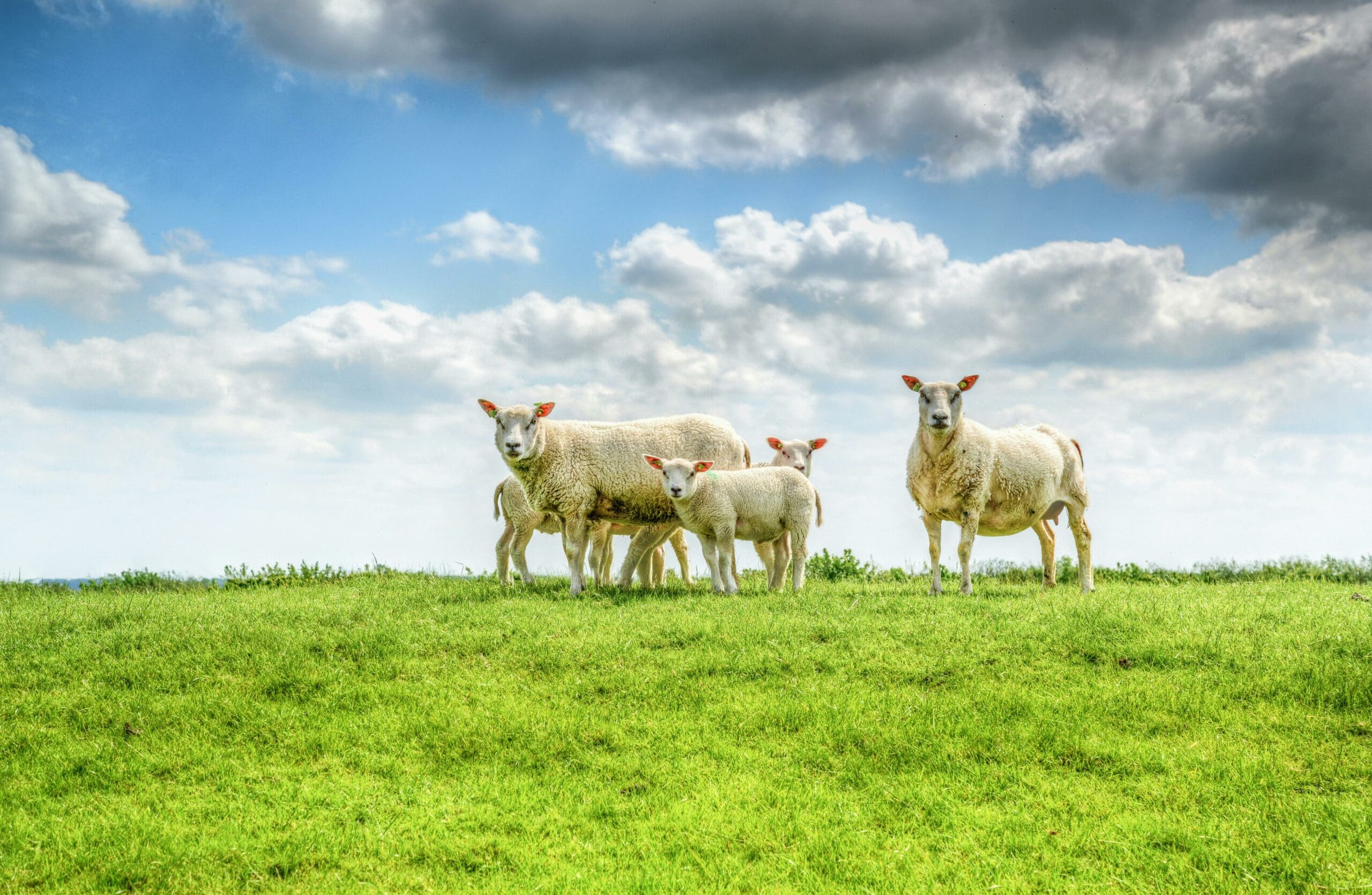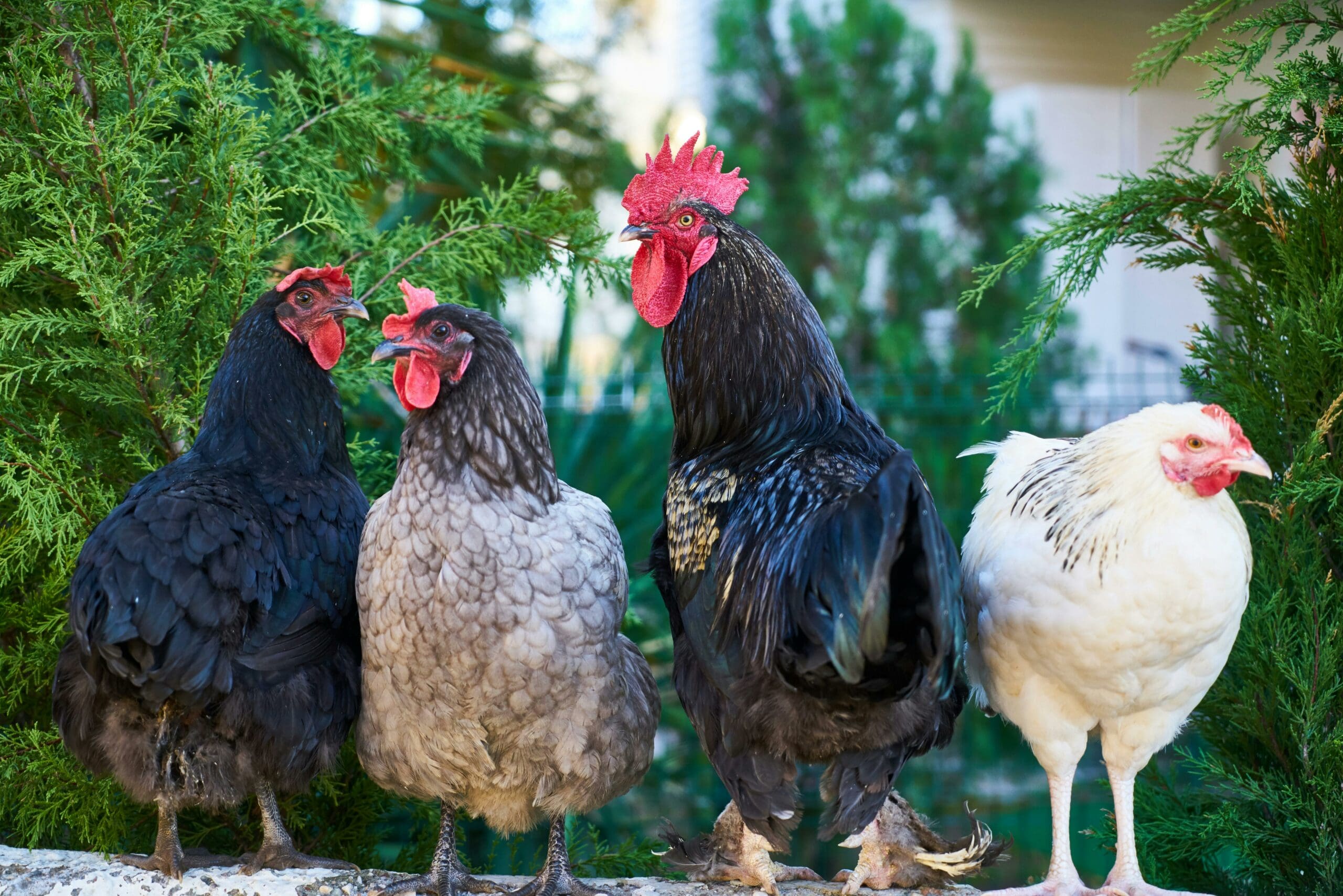
Maths on the Farm: Counting Animals and Feed – Exciting Basic Arithmetic in Agriculture
Table of Contents
Maths on the farm is not just about profits and yields; it’s a fundamental part of daily farm life, especially when it comes to managing livestock. Our days begin with counting animals, a task that ensures all are present, healthy, and accounted for. This routine activity may seem simple, but it is a critical aspect of farm management, linked closely to the wellbeing of the animals and the efficiency of the operations.

Farmers record data about feed consumption alongside animal headcounts to manage resources effectively. Calculating the amount of feed required for each type of animal, adjusting for factors like liveweight and seasonal needs, is crucial. This practice not only helps in budgeting and planning but also supports the optimization of animal nutrition, fostering a healthy and productive environment.
Key Takeaways
- Counting animals is integral to everyday farm management and animal welfare.
- Feed calculations are essential for resource management and animal health.
- Maths is a foundational element in the efficient operation of a farm.
Getting Started with Farm Maths

When it comes to farm maths, we start at the very beginning with numbers and basic counting, using engaging activities that involve our preschool friends and toddlers. Our learning objectives are clear: to make farm activities a playful and educational experience.
Understanding Numbers and Basic Counting
We can’t begin to talk about farm maths without first getting comfortable with numbers. It’s like learning a new language where numbers are our alphabet. Here’s how we can introduce counting in a way that’s fun and engaging:
Counting with Toys: Grab some toy animals and line them up. We can count them one by one:
- Cow
- Pig
- Sheep
- Horse
Counting with Actions: Let’s pretend we’re farmers feeding animals. We can say, “One scoop for you,” as we pretend to feed a hen, and “Two scoops for you,” to the duck. This way, we’re incorporating numbers into our farm activities and making it a playful experience.
Exploring Farm Animals and Their Sounds
Now, let’s combine our counting with learning about farm animals and the sounds they make. This is perfect for our auditory learners who pick up new ideas by listening:
- One cow goes moo
- Two ducks go quack-quack
- Three pigs go oink-oink-oink
By pairing numbers with animal sounds, we’re making learning multisensory. We’re not just saying the numbers; we’re hearing, speaking, and even moving, pretending to be these animals, which makes the learning experience stick for our toddler friends.
Interactive Counting Activities
We’ve put together a couple of engaging activities designed to make counting fun for children, especially those in kindergarten. These interactive counting activities are not just enjoyable but are also educational, reinforcing basic mathematical concepts through play.
Counting Farm Animals Worksheet
Among our resources, the Counting Farm Animals Worksheet provides an excellent start for little ones. It’s a delightful way to help kids practice their counting skills. As they count the number of each animal on the farm, they fill in the numbers on the sheet. It combines visual learning with counting to enhance cognition and numeracy. Children can count pigs, cows, chickens, and more, solidifying the concept of numbers in a themed and familiar context.
Using Dice for Counting Games
Nothing beats a good old-fashioned pair of dice to create a Counting Activity. Throwing dice adds an element of surprise to the counting game. Children can roll the dice and then count out that number of feed pieces for the farm animals — from grains for the chickens to carrots for the rabbits. Introducing dice into counting games not only helps with number recognition but also with understanding quantities.
For added excitement, you can set up a Sensory Bin filled with mixed grains to simulate farm feed, turning the task into a tactile experience. Or involve a Gross Motor Farm Game, where kids jump or hop the number of times they roll on the dice, moving like the farm animals they’re feeding. This not only develops counting skills but also motor skills and bodily-kinesthetic intelligence.
Lay the groundwork for numeracy with these hands-on activities that are perfect for introducing young learners to the joy of mathematics on the farm.
Creative Farm Art and Craft
In our section on “Creative Farm Art and Craft,” we’ll explore how combining the joy of art with a farm theme can greatly enhance the learning and sensory experience for preschool children. We’ll specifically delve into crafts that are perfect for little hands and create magical sensory bins to ignite their imaginations.
Farm Animal Crafts
We find that farm animal crafts are not just fun but also educational. By using a mix of paints, papers, and textures, our little ones can learn about colours and animal shapes in a hands-on way. For example, we may use a combination of cotton wool to create fluffy sheep or craft sticks for fence making. This tactile experience is a creative method to engage preschoolers with the concept of farm life.
Materials Needed:
- Finger paints
- Paper plates
- Craft sticks
- Cotton wool
- Googly eyes
Step-by-Step Craft:
- Paint a paper plate to represent an animal’s face using finger paints.
- Once dry, attach googly eyes and use cotton wool for added texture.
- Use craft sticks to make mini pens for the animal crafts.
Making Sensory Bins
Creating a sensory bin with a farm theme is a fantastic way to provide a multi-sensory experience. We can fill a large container with items like dried beans, plastic animals, and small shovels for scooping and moving ‘feed’ around the bin. Add in some green fabric or shredded paper to represent grass, and you’ve got a makeshift farm landscape. These sensory bins are splendid for developing fine motor skills and can be reused in numerous ways.
- Sensory Bin Components:
- Large, shallow container
- Dried beans or rice
- Plastic farm animals
- Small shovels or scoops
- Green fabric or shredded paper
With LearningMole, we can find a wealth of resources to help us construct these educational and sensory activities. Their guides are tailored, featuring activities that support both engagement and learning. Their approach, especially beneficial for children with SEN, ensures that every child can participate in the joy and creativity of farm-themed art and craft.
Learning Through Play
Engaging preschoolers in maths learning can be an enjoyable and enriching experience when it combines educational concepts with the excitement of play. We will explore how play dough and farm-themed activities can make counting and understanding maths fun.
Incorporating Play Dough
Play dough provides a fantastic sensory experience for young children and can be utilised to teach basic maths during farm activities. We can create shapes that represent different farm animals or pieces of feed, and encourage children to count them. For instance:
- Roll the dough into balls to represent chicken eggs and count them.
- Make small dough carrots or apples and tally them up as ‘feed’ for our dough animals.
This hands-on activity helps enhance fine motor skills along with reinforcing counting and mathematical concepts in a tactile way.
Organising a Farm Theme Day at Home or School
A farm theme day is a brilliant way to immerse preschoolers in a fun, educational environment. We can arrange various farm activities that incorporate counting and maths. Here’s a simple plan for the day:
- Animal Count: Set up different areas as various farm animal pens and have children count the number of animals in each one.
- Feed the Animals: Provide play feed and ask the children to distribute the correct amount to each animal, practicing numbers and quantities.
- Measuring: Use farm-themed rulers to measure lengths of wool or feed sacks.
Remember, play is not just about fun—it’s a powerful tool for learning. By incorporating these interactive and sensory activities, preschoolers will be able to learn maths concepts in an environment that encourages exploration and enjoyment.
Counting and Matching Games
In this section, we’ll dive into some interactive games that enhance counting skills through matching exercises involving farm animals. Our activities are not only fun but also educational, supporting cognitive development in early learners.
Farm Animal Memory Cards
Memory games with farm animals can be a delightful way to boost memory and matching skills. We create sets of cards featuring various animals found on the farm, such as cows, pigs, and chickens. To play, we shuffle the cards and lay them face down. Players take turns flipping over two cards, trying to find pairs of the same animal. It’s an enjoyable challenge that helps children sharpen their memory and their ability to match while also familiarising them with different farm animals.
Sorting and Classifying Activities
We use sorting and classifying games to advance children’s understanding of different categories and attributes. Using various representations of farm animals, we can sort them by type, size, or colour. For instance, we may have a mix of animals and feed, and our task is to sort them into groups – perhaps all the sheep in one paddock and all the hay in another. This not only reinforces counting skills but also introduces the concept of classification, which is a fundamental part of mathematical thinking.
Fine Motor Skills Development

In our exploration of “Maths on the Farm”, we understand that integrating fine motor skills into learning activities is essential for children’s development. Let’s examine how tracing and colouring farm animals, along with using counters and scoops for sorting, can enhance these skills.
Tracing and Colouring Farm Animals
Tracing outlines of farm animals provides children with an opportunity to practise controlling pencils and crayons, which is vital for developing a proper grip and building fine motor strength. By carefully following the lines, youngsters refine their hand-eye coordination and precision. Colouring within these outlines further encourages attention to detail and the development of patience as they complete the picture with a range of colours.
Using Counters and Scoops for Sorting
Another hands-on activity involves sorting counters that represent different elements of farm life, such as animals and feed. Children can use scoops to transfer these counters into designated areas, which not only improves their fine motor skills but also introduces basic counting and categorisation concepts. This act of scooping and sorting is particularly effective in fostering coordination between small muscles in the hands and fingers, crucial for writing and other daily tasks.
Printable Resources for Teachers and Parents

We understand the importance of engaging educational resources, which is why we’re excited to offer teachers and parents a variety of free printable materials to make learning about maths on the farm fun and interactive.
Using Farm Counting Cards
Farm counting cards are a fantastic tool for young learners to practise their counting skills in a themed and enjoyable way. Each card displays a certain number of animals or feed portions, allowing children to count and match the numbers accordingly. These are especially useful for parents homeschooling their young ones or teachers looking to incorporate a farm theme into their maths lessons.
Free Printable Worksheets
Our free printable worksheets reinforce the maths concepts introduced with the counting cards. They include activities for children to engage in counting, sorting, and basic arithmetic centred around farm life. Incorporating illustrations of farm animals and feed, these worksheets are designed to hold a child’s attention and make learning a pleasure.
Both these resources ensure that teachers and parents have reliable and creative tools at their disposal to support the mathematical development of children without incurring any costs. Remember to check for any affiliate links provided to support creators of such resources.
Maths-Infused Science and Literacy

In our section, we’re bridging the gap between science and literacy through the engaging theme of farm life. By intertwining mathematics with biology and language arts, we craft a holistic learning experience for children.
Farm Animal Life Cycles
Our study on the farm animal life cycles encourages children to explore the fascinating progression from birth to adulthood of various farm creatures. Using a counting farm animals worksheet, pupils observe and tally different stages, such as chicks hatching from eggs and lambs growing into sheep, reinforcing their numerical skills while they learn about biology.
Integrating Letter Recognition and Counting
We effectively merge letter recognition with numerical exercises by employing farm-themed books for preschool. Children identify CVC words and sight words within the context of agriculture, making connections between the letters and numbers of their harvests – for instance, counting five ducks while recognising the letter ‘D’.
These hands-on approaches foster not only a love for maths but also a deeper understanding of life sciences and an enhanced aptitude for literacy.
Advanced Farm Maths Activities

In this section, we explore how the foundational principles of addition and subtraction can be applied to farming activities tailored for preschoolers and kindergarten pupils, as well as deepening their understanding through sequencing and pattern recognition.
Introducing Addition and Subtraction
When we think about adding or subtracting on the farm, it’s a fantastic way for little ones to learn these skills in a practical setting. Addition can be as simple as counting two groups of chickens to find out how many there are in total. For instance, if there is one group of 3 chickens and another group of 2, children can combine them to see that 3 plus 2 makes 5. Similarly, subtraction could involve stories like, “If there are 5 carrots and the rabbit eats 2, how many are left?”
This visual and tangible approach helps children grasp the concept of taking away. We can introduce these concepts through interactive storytelling or with the help of sequencing cards to make the process more engaging.
Understanding Sequencing and Patterns
Sequencing is another vital aspect that can be taught using a farm setting. This might involve arranging a series of images or events on the farm in a logical order, such as the process of planting seeds, watering them, and seeing them grow. This helps children understand the idea of ‘first, second, third’ and so on, which is a precursor to understanding more complex maths concepts.
Patterns are everywhere on a farm, from the stripes on a bee to the arrangement of seeds in a sunflower. We can use these natural examples to teach children how to identify and continue patterns using numbers 1-10. For instance, little learners might create a pattern of animal sounds or feeding sequences (like ‘2 chickens, 1 sheep, 2 chickens, 1 sheep…’) to build their early maths skills in a way that’s both fun and relevant to their everyday experiences.
By providing these hands-on learning opportunities, we not only teach the unit principles of maths but also sowing the seeds of curiosity and excitement for learning. Our activities are crafted to encourage young minds to connect with mathematics as a part of life on the farm and beyond.
Themed Learning Units

In our Themed Learning Units, we take a farm-inspired approach to learning essential maths skills. It’s a hands-on, engaging way for preschool children to learn about numbers and measurements using a farm theme. Let’s explore how we can use the setting of a farm to create a fun learning environment.
Exploring the Big Red Barn
In the Big Red Barn unit, we focus on counting and recognising farm animals. Imagine walking through a barn and counting each type of animal. We might ask, “How many cows are in the barn?” or “Can we tally the number of chickens roosting?” This kind of interaction brings maths to life, providing a tangible way to understand numbers.
- Cows: 5
- Chickens: 12
- Sheep: 7
We can also use toy tractors to demonstrate basic addition and subtraction, encouraging children to “drive” the tractor around to collect or deliver the right number of animal feed bags.
DIY Farm Projects
Our DIY Farm Projects inspire children to build their own farm scenes. Using everyday materials, the little ones can construct their very own farmyard. This activity not only bolsters creativity but also integrates maths, as they measure distances for placing their crafted barns and decide how many animals to include in each section.
- Materials needed:
- Cardboard
- Paint
- Glue
- Craft sticks
- Project ideas:
- Build a tractor from cardboard boxes
- Create a vegetable garden and count the different plants
Through these hands-on activities, maths becomes an exciting part of the world kids can touch and see, moving beyond abstract concepts to something they can interact with and understand.
Resource Guide for Farm Maths Education
In our educational journey, we’ve come across numerous methods to make learning maths enjoyable and practical, especially for our budding farmers. We believe that integrating real-world scenarios, like farming, into maths education can enrich a child’s learning experience. Here’s a quick guide with resources to assist teachers and parents in introducing farm-based maths concepts to children.
1. Counting Animals:
Counting is a fundamental skill on a farm. We’ve found some fantastic free printables that bring the barnyard into the classroom. Kids can practice counting various farm animals, reinforcing both their maths literacy and unit recognition skills.
- Activities for Children:
- Animal Counting Worksheets
- Barnyard Memory Games
- Interactive Farm Maths Puzzles
2. Measuring Feed:
Understanding quantities and measurements is crucial when working with farm resources. Our selected resources provide a hands-on experience in measuring different types of feed and calculating ratios, a practical application of maths.
- Tools and Resources:
- Feed Measurement Lesson Plans
- Ratio and Proportion Activities
3. Enhancing Education with Technology:
Leveraging technology can enhance how we teach farm maths. Engaging tutorials and online platforms can visualise concepts such as the stocking rate in sheep farming, which affects feed intake.
- Tech-Driven Learning:
- Virtual Farming Simulations
- Data Management Software Tutorials
4. Supporting Diverse Learners:
Incorporating resources for children with different learning needs, including those with SEN, ensures every child can access farm maths education. Our curated guides and activity sheets adapt learning to various needs.
Remember, our aim is to create a friendly and engaging learning environment, keeping education not just informative but also incredibly fun. Join us in making maths on the farm an adventure for every child!
Frequently Asked Questions
We’ve compiled a list of common inquiries about incorporating maths into farm activities, ensuring the information provided here will help you create interactive and educational experiences for children.
What activities can help children learn to count farm animals effectively?
Using figurines or pictures of animals, we can encourage children to count actual representations of farm animals, which can reinforce their counting skills. Another fun way is to organise a pretend visit to the farm, where they can “see” animals and count them as they go along.
Where can I find printable worksheets for ‘Maths on the Farm’ activities?
A variety of worksheets for ‘Maths on the Farm’ activities are available online. Websites dedicated to educational resources for children often have a selection of themed worksheets suitable for different age groups.
How does the ‘Feed the Farm Animals’ activity aid in early childhood development?
The ‘Feed the Farm Animals’ activity assists early childhood development by enhancing fine motor skills, promoting counting accuracy, and introducing the basics of quantity and addition as children allocate specific amounts of feed to each animal.
Are there any templates available for setting up a ‘Feed the Farm Animals’ game?
Yes, templates for a ‘Feed the Farm Animals’ game can often be found on websites that focus on educational activities and games. These templates can be printed and used to create a hands-on feeding game that involves counting and number recognition.
Can you suggest some sensory bin ideas for a farm-themed feeding activity?
For a farm-themed sensory bin, consider using items like oats or corn as “feed,” and include small animal figurines or toy tractors. This setup allows children to engage in imaginative play while practising scooping, pouring, and counting.
What are the benefits of incorporating farm animal feeding into maths lessons for young learners?
Incorporating farm animal feeding into maths lessons for young learners offers a tactile and visually stimulating approach to learning. It helps children understand maths concepts in a concrete way and can improve their engagement and retention of the material.


Leave a Reply